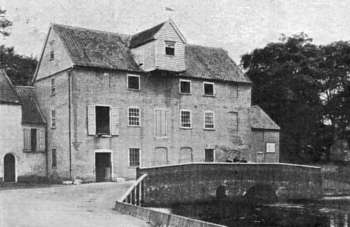 |
|
c.1905
|
|
Thetford
Mill River Thet |
 |
|
c.1905
|
|
Thetford mill in Watermill Lane was built of Thetford grey brick with weatherboard gables and lucum under a pantiled roof. For many years this was a corn mill but for the last years of its working life the stones were turbine powered and ground coffee. Production ceased in the late 1950s. |
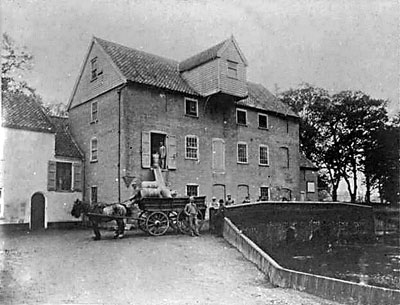 |
c.1910 |
|
...and of two mills the king hath two
parts and the earl a third. The king has two parts of a third mill, and
of those two parts the earl has third. |
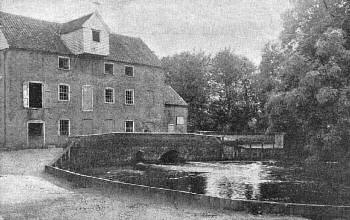 |
c.1915 |
Royal Exchange Fire Insurance policy 99841 |
Jos. Gill of Thetford in the Co. of Norfolk, Mercht. On his Water Corn Millhouse, Boulting Mill & Bran Chamber adjg. brick, stone & tiled, sit. in Thetford aforesd. & on the Mills in the said Millhouse togr. with the running Tackle & other parts of the Machinery belog. thereto - £500. Utensils & Trade therein - £500. 29th November 1786 |
|
...and two water mills, value £5. |
|
...shall make, kepe, and repare oon
of the saide breges lyeing on the king's water and ryver runinge from
the Castell mille toward the Pytmell, in the said towne... |
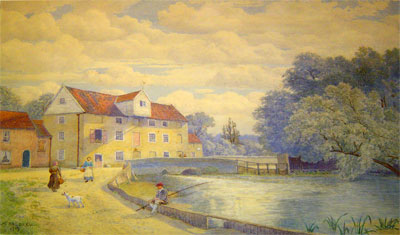 |
1919 painting by S. H. Baldrey |
|
Re. ancient
maps: |
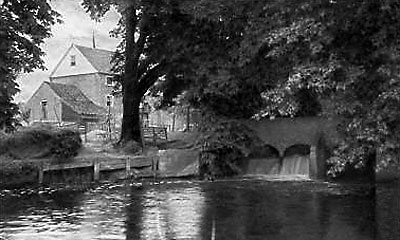 |
Mill bypass c.1920 |
|
1715 |
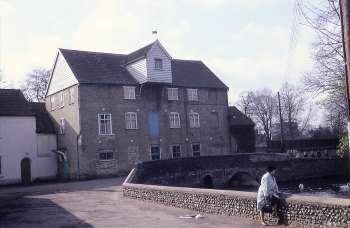 |
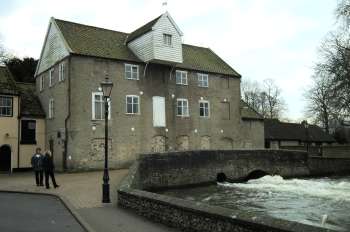 |
|
April 1967
|
26th January 2003 |
THETFORD, |
At the Bankruptcy Court of Norwich, on Wednesday, F. R. Rist, of Thetford, Miller appeared for public examination before Mr. Registrar Cooke. The liabilities were stated at £3,369/9/3, and there was a deficiency of £3,001/0/6. Mr. E. Reeve (Messrs. Mills & Reeve) appeared for three debtors. In reply to the Official Receiver, debtor said he was brought up as a miller, and was employed by Mr. Jillings, at the Water mills, Thetford, as manager, receiving, with 2½ per cent, on the profits, a salary of £150 a year. In 1896 he was owing some £56, and had no assets. He agreed with Mr. Jillings that the business should be made over to him, and the tenancy was transferred to him on the same terms as Mr. Jillings held it. No proper valuation was ever made, and debtor, could not remember the terms of the rough valuation of himself and Mr. Jillings, but believed the final price agreed upon was £2,700. He had no idea what the stock or utensils separately amounted to. He thought he gave £500 for the good will and £1,500 for book debts, so that would leave £700 for other assets. Mr. Jillings left £200 over, and Mrs. Jillings lent him £200. The balance, £2,500, was advanced to him by Messrs. Oakes & Co’s bank, Bury. He obtained an advance of £1,500 from Mr. Scott in consideration of an arrangement of the book debts. Scott was a friend of his, but no relation, and had no other security for this advance than the book debts. Debtor could not say what the debts assigned to Scott had actually realised, but he thought he paid Scott more than he received. Debtor paid a commission of £75 for this loan, and interest at 5 per cent, which was calculated from day to day. In July 1897, another assignment was given by debtor to Scott, the whole of the amounts which he owed Scott being brought into one account of £800. Debtor was closely examined as to why he gave Scott a second assignment of book debts In October 1897, while he was insolvent, in preference to his other creditors; but debtor said that was the arrangement they made when he received his first advance from Scott. |
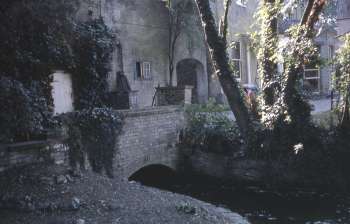 |
|
Headrace
October 1969
|
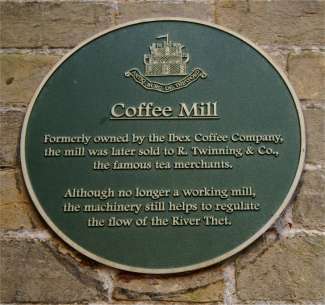 |
|
Plaque
on the mill gable end January 2003
|
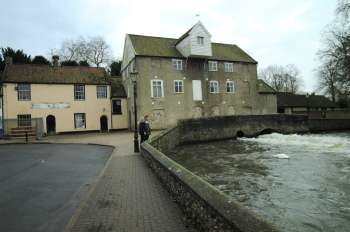 |
|
The
mill & mill house January 2003
|
Mysterious foam spotted in Thetford checked by Anglian Water |
The mystery of Thetford's floating foam is continuing to leave the people of the town baffled as to where it came from. |
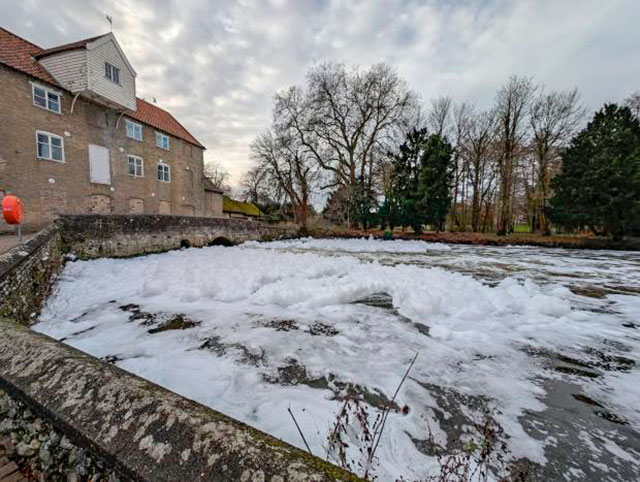 |
"They have informed me that all of our assets are working as they should be, and this is a repeat issue caused by a third party." |
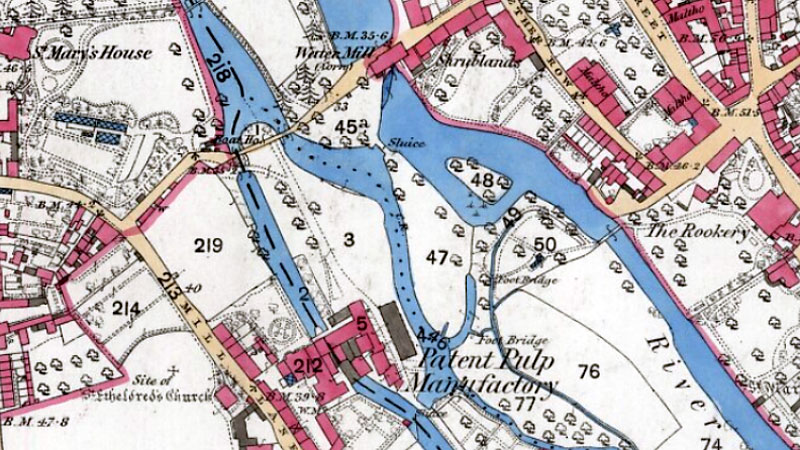 |
O. S. Map 1882 |
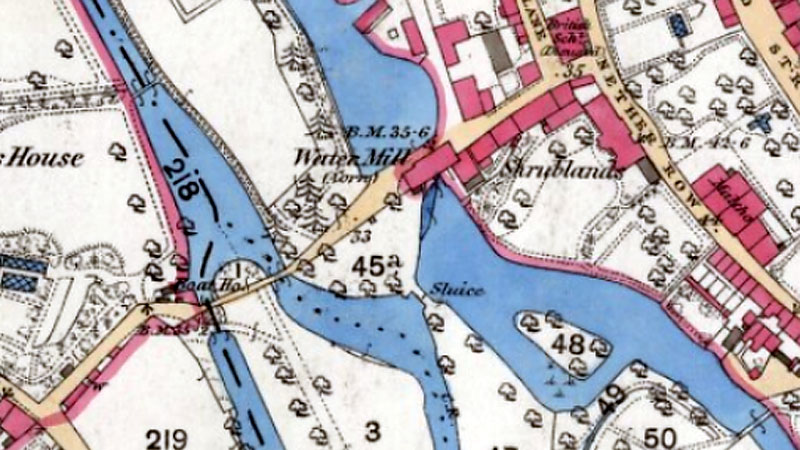 |
O. S. Map 1882 |
 |
2005 map |
|
Kelly's 1904: James Mayes, farmer, London road
Kelly's 1929: James Cronshey & Sons Ltd. coal merchants, Water Mill lane
|
|
7th April 1715:
192lb sturgeon killed in the millpool
Kelly's 1912: James Mayes & Sons, millers (water & steam) Thetford water mills. T A "Mayes, Thetford" Kelly's 1916: James Mayes & Sons, millers (water & steam) Thetford water mills. T A "Mayes, Thetford" Kelly's 1922: James Mayes & Sons, millers (water & steam) Thetford water mills. T A "Mayes, Thetford" |
If you have any memories, anecdotes or photos please let us know and we may be able to use them to update the site. By all means telephone 07836 675369 or
|
| Nat Grid Ref TL8704 8285 | Copyright © Jonathan Neville 2004 |